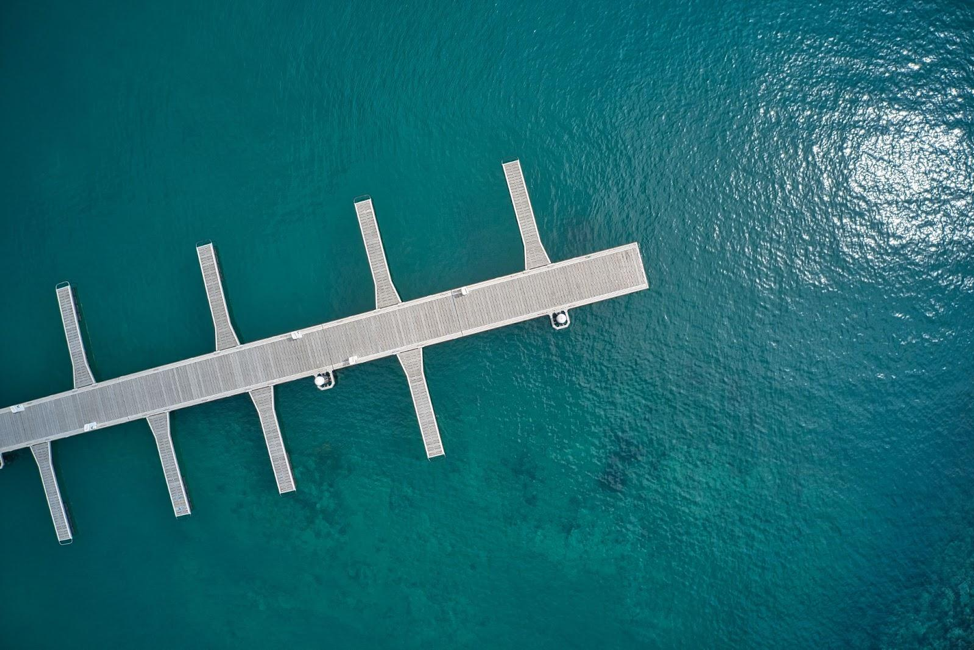Floating Docks: The Smart Selection for Modern Waterfront Living and Leisure
Floating Docks: The Smart Selection for Modern Waterfront Living and Leisure
Blog Article
Upgrade Your Waterfront With Resilient Floating Docks
Updating your waterside with durable floating docks can dramatically enhance both functionality and appearances, offering a versatile solution for numerous water tasks. These structures are made to adjust to fluctuating water degrees, making sure safety and security and access throughout the periods. With an array of materials available, including low-maintenance alternatives and traditional wood, picking the right dock can complement your personal design and satisfy useful requirements. Nonetheless, comprehending the subtleties of setup and maintenance is important for ensuring long life and performance. When making this financial investment?, what factors should you think about.
Benefits of Floating Docks
Floating docks deal a plethora of benefits that improve their allure for numerous maritime applications. Unlike standard fixed docks, floating docks increase and fall with the trend, guaranteeing regular access for boats and boat no matter of ecological problems.
Furthermore, floating docks are easier to move and set up, supplying flexibility for short-term or seasonal usage. Their modular style permits customization to fit specific needs, whether for personal marinas, domestic beachfronts, or business applications.
In addition, floating docks create very little disruption to the aquatic environment, preserving neighborhood communities and decreasing the likelihood of disintegration. They additionally provide enhanced security and stability for individuals, as their resilient nature uses a more flexible surface area than inflexible structures.
Additionally, floating docks can promote a varied array of activities, such as angling, swimming, and leisure boating, making them a useful possession for waterside growth. Their versatility and usefulness make floating docks a preferred option for a range of naval projects.
Picking the Right Materials
Picking ideal products for floating docks is crucial to their durability, efficiency, and total efficiency. When choosing products, take into consideration factors such as ecological direct exposure, maintenance demands, and architectural integrity. Common materials consist of timber, plastic, aluminum, and composite choices, each offering distinct advantages and disadvantages.
Wood, while aesthetically pleasing, calls for normal upkeep to protect against rot and degeneration. Pressure-treated timber can enhance toughness, however it may still give in to water damage in time. Plastic floats, often made from high-density polyethylene, are resistant to rust and call for marginal maintenance, making them an attractive choice for low-maintenance applications.
Light weight aluminum is another feasible option, recognized for its strength and light-weight residential properties. It is immune to rust and can stand up to harsh climate condition, although it might be extra expensive than various other materials. Compound products combine the best attributes of wood and plastic, providing a durable and low-maintenance choice that imitates the appearance of timber without the associated downsides.
Ultimately, the selection of material ought to line up with the intended usage, environmental considerations, and spending plan restraints, making sure a resource useful and resilient floating dock that meets your certain demands.
Installment Process Review
The effective installation of a drifting other dock relies upon cautious preparation and execution, making certain that it runs effectively in its intended atmosphere. The primary step involves assessing site problems, consisting of water depth, coastline functions, and dominating climate patterns, which will notify the dock style and anchoring system.
Complying with the site analysis, the following phase is to prepare the floating dock components. This consists of constructing the structure, safeguarding floats, and affixing any type of required equipment. It is vital to make certain that all connections are robust and water-resistant to stand up to aquatic conditions.
When the dock is put together, the installation procedure starts with positioning the dock in the water. This can involve a crane or other training devices, especially for bigger structures. Correct positioning is vital for performance and safety and security.

Maintenance Tips for Durability
Routine upkeep is crucial for ensuring the durability and ideal performance of a drifting dock. To accomplish this, start with routine inspections at the very least twice a year, concentrating on the integrity of the dock's structure, consisting of the flotation gadgets and connecting hardware. Search for indicators of wear, rust, or damage, and address any type of problems quickly to stop additional damage.
Cleaning up is one more essential aspect of upkeep. Eliminate debris, algae, and barnacles from the dock's surface to stop unsafe problems and maintain visual appeal. Use a mild cleaning agent and a soft brush to stay clear of damaging the dock's materials.
In addition, make sure that the dock is appropriately anchored and safeguarded to withstand seasonal modifications in water degrees and weather condition problems. Examine the anchoring system for security and make adjustments as required.
Enhancing Your Outdoor Visual
To develop an aesthetically enticing outside room, including a drifting dock can dramatically enhance the general visual of your waterside building. Floating docks are not only functional however can also act as a striking prime focus that matches the natural environments - dock company. Available in numerous web products and layouts, these docks can be personalized to match your residential or commercial property's architectural design and landscape
The addition of decorative elements, such as incorporated illumination or stylish railings, even more elevates the dock's visual appeal. Think about utilizing all-natural timber surfaces, which mix seamlessly with the environment, or opting for contemporary products like light weight aluminum or composite outdoor decking that offer a streamlined, contemporary look.
Tactically putting planters or seating locations on or around the dock can produce welcoming areas that motivate leisure and pleasure of waterside sights. In addition, incorporating shades and structures that integrate with your landscape will certainly develop a cohesive visual throughout your outdoor area.

Conclusion

Updating your waterside with durable floating docks can considerably improve both functionality and visual appeals, giving a versatile solution for various water activities. Unlike standard fixed docks, floating docks increase and loss with the trend, making certain regular accessibility for watercrafts and boat regardless of environmental conditions.Picking proper materials for floating docks is essential to their long life, efficiency, and general efficiency.As soon as the dock is set up, the installation process starts with positioning the dock in the water.In summary, floating docks offer many benefits, consisting of versatility to water degree modifications and a range of material options.
Report this page